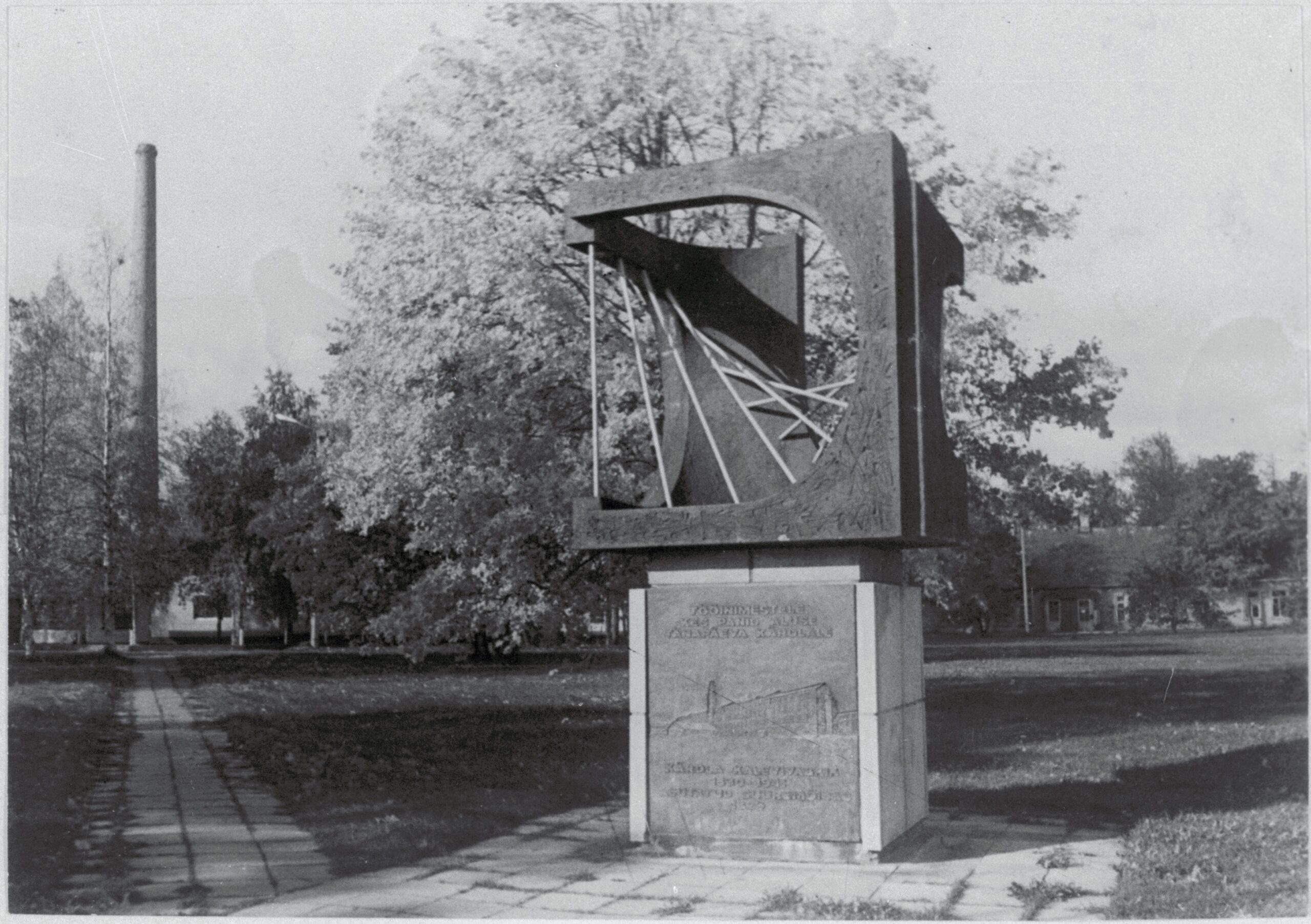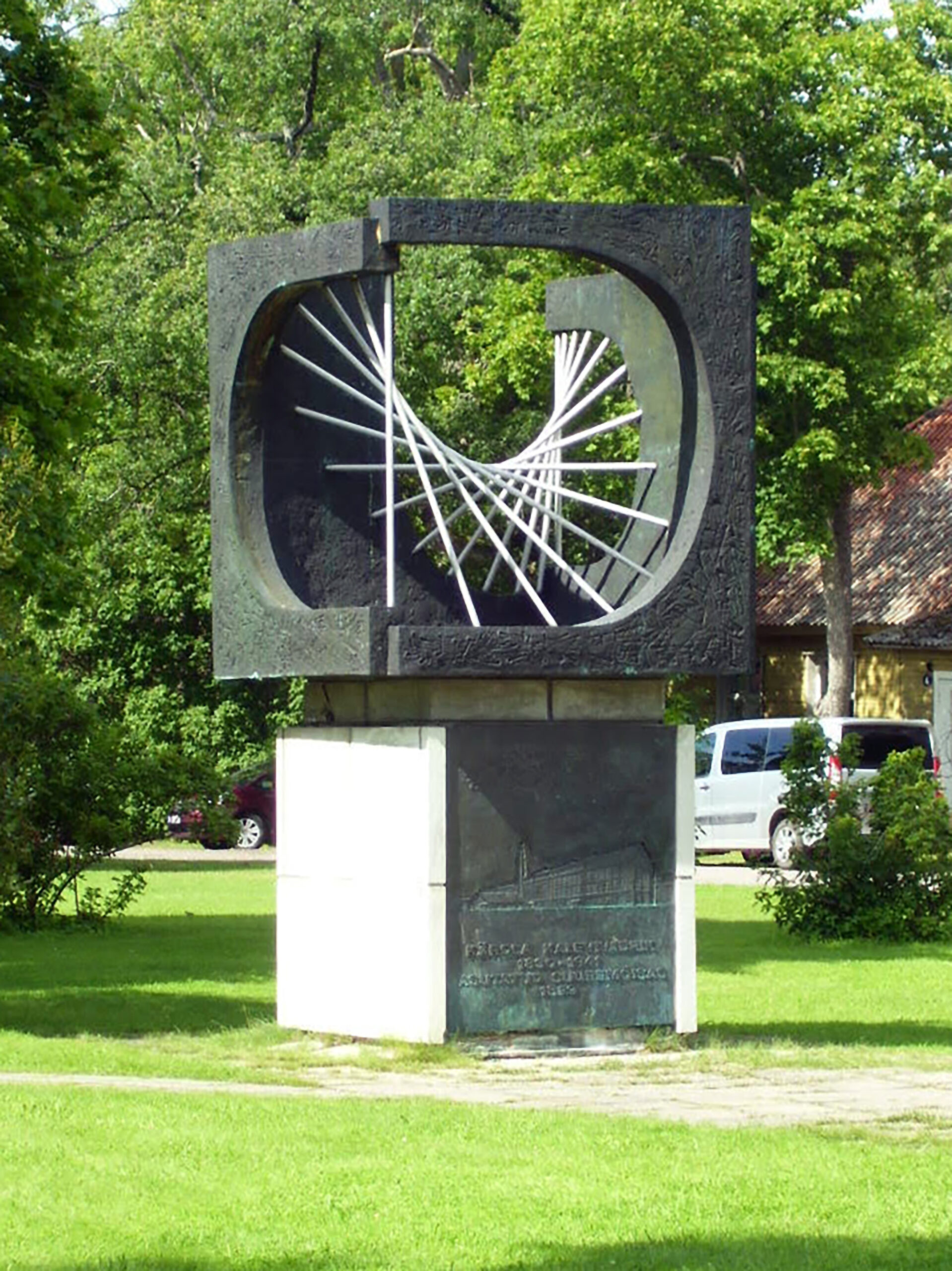Statue for the Kärdla Broadcloth Factory
Year of completion: 1985
Address: Hiiu County, Kärdla, Vabrikuväljak (Factory Square)
Author Mati Karmin
Bronze, dolomite
Not listed as a cultural monument
The statue for the Kärdla broadcloth factory was commissioned in 1984 by the local Public Works Department. The commission was given to final-year student of the Estonian Academy of Arts, Mati Karmin, partially in order to not involve manufacturing company ARS into the matter. In fact, the Kärdla broadcloth factory statue is sculptor Karmin’s first monumental piece, which meant a large commission at the time, in the sense of both workload and pay.
The creation and erection of the statue is accompanied by myths and incredible humorous stories characteristic of Hiiumaa, even the fact that the artist had to rip up the plank floor of his cellar atelier in Pelgulinn, and take out almost half a metre of soil from under it in order to begin working on the model in such narrow conditions. Even so, he hardly had room to work around the clay model. Only later on, after finishing the model, could the pieces of its plaster mould be raised out of the atelier windows and given over to casting.
What makes the piece remarkable is the fact that it attempts to carry over an illusion, characteristic of Op art (Optical art), into a three-dimensional sculpture, helped also by the deepened bas-relief depicting the Broadcloth Factory on the front-side of the sculpture. Attempting to carry over an illusion is already difficult in terms of reference, as many pursuits cannot work in the other realm due to the logic of pictures and shapes. The illusion of a spinning warp, which is a common Op art dynamics technique on paper, becomes possible through the symbiosis of the Op art’s image and a statue’s shape form, as it is presented through an architectural prism. Through addressing a statue as an architectural form, its pursuit of movement comes alive.
Such statues are more likely to survive societal changes due to lack of a direct political or personal charge. Through aesthetic challenges, the self-righteousness of the people of Hiiumaa is preserved in material form forever, regardless of the current political regime.
Enriko Mäsak








